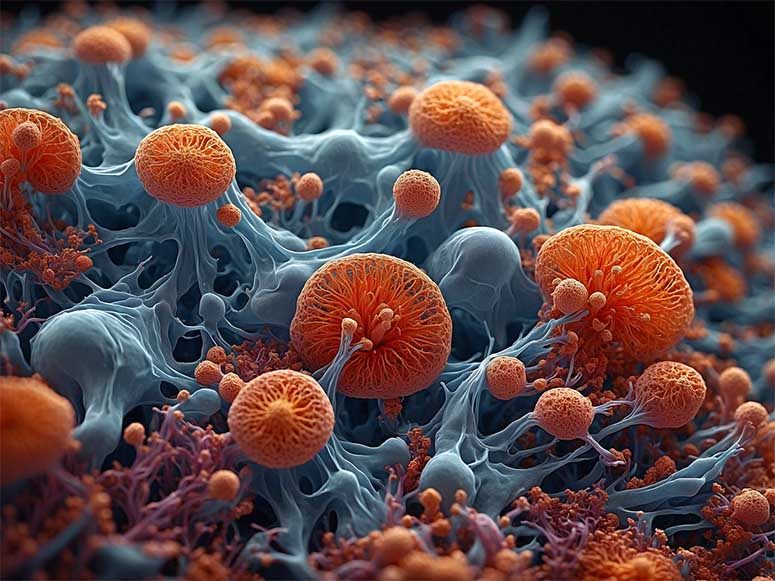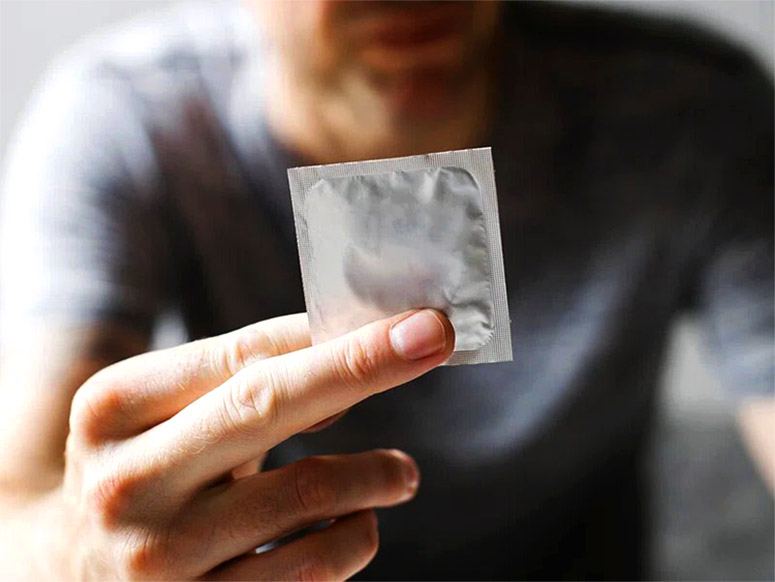Contents
Sexually transmitted diseases (STDs) continue to represent a significant public health concern, affecting millions of individuals globally.
A comprehensive understanding of the most prevalent STDs, including chlamydia, gonorrhea, syphilis, HIV, and HPV, is essential for promoting awareness and effective prevention strategies.
What are the odds of contracting a sexually transmitted disease in a lifetime? This question highlights the importance of understanding the risks associated with these infections.
This article examines the likelihood of contracting these diseases over a lifetime, the various factors that influence these probabilities, and provides practical recommendations to mitigate risk.
Furthermore, it addresses the potential consequences of STDs, encompassing both physical and emotional impacts, thereby underscoring the importance of safe practices and regular testing.
What are the most common sexually transmitted diseases?
Sexually transmitted diseases (STDs) constitute a significant public health challenge, impacting millions of individuals globally.
A comprehensive understanding of the various types of STDs, their symptoms, modes of transmission, and the critical importance of awareness can significantly enhance sexual health and inform effective preventive measures.
These infections can result from a diverse array of sexual practices and can affect all demographics, irrespective of sexual orientation, age, or socio-economic status.
By recognizing the symptoms and pursuing appropriate treatment and testing, individuals can contribute meaningfully to the control of infection rates and the promotion of healthier intimate relationships.
1. Chlamydia
Chlamydia is one of the most prevalent sexually transmitted infections worldwide. It is often asymptomatic; however, if left untreated, it can lead to serious health complications.
This bacterial infection is primarily caused by the bacterium Chlamydia trachomatis, which is transmitted through unprotected sexual contact.
Individuals may remain unaware of their infection due to the absence of noticeable symptoms, which can include abnormal discharge or discomfort during urination.
Without timely testing and treatment, complications such as infertility and pelvic inflammatory disease may develop, particularly in women.
Regular screenings are essential, especially for sexually active individuals under the age of 25, to ensure early detection and effective management of the disease.
Healthcare providers play a critical role not only in diagnosing and treating chlamydia but also in educating patients about awareness and preventive measures.
These measures include the use of condoms and the importance of open communication with partners.
2. Gonorrhea
Gonorrhea, a bacterial infection, is a prevalent sexually transmitted disease that can lead to significant health issues if not diagnosed and treated in a timely manner.
This infection is primarily transmitted through sexual contact, including vaginal, anal, and oral intercourse.
Many individuals may not exhibit visible symptoms, which can include painful urination, unusual discharge, and pelvic pain.
This lack of symptoms increases the risk of unknowingly spreading the infection. If left untreated, gonorrhea can result in severe complications such as pelvic inflammatory disease, infertility, and heightened susceptibility to HIV.
Consequently, timely testing and consistent treatment are essential. Regular screening, particularly for sexually active individuals, facilitates early detection and helps prevent serious health consequences.
This highlights the importance of adhering to prescribed treatment regimens to ensure complete recovery.
3. Syphilis
Syphilis is a complex sexually transmitted infection characterized by distinct stages, each with unique symptoms that necessitate timely diagnosis and intervention.
This infectious disease progresses through four primary stages – primary, secondary, latent, and tertiary. Each stage presents its own manifestations, which may range from sores and rashes to severe complications if left untreated.
Transmission typically occurs through direct contact with syphilis sores during sexual activity, underscoring the importance of regular health screenings and prompt notification of partners to prevent further spread.
Addressing syphilis not only benefits individual health but also carries significant implications for public health.
Untreated cases can lead to an increase in infections within the community, heightening the risk of serious health issues and further complicating efforts to control sexually transmitted infections overall.
4. HIV

Human Immunodeficiency Virus (HIV) continues to pose a significant public health challenge, impacting numerous lives and necessitating ongoing education, testing, and effective treatment strategies.
This virus is primarily transmitted through unprotected sexual intercourse, sharing of needles, and from mother to child during childbirth or breastfeeding.
Individuals infected with HIV may experience a range of symptoms, including fatigue, fever, swollen lymph nodes, and other flu-like manifestations, which are often easily overlooked.
Consequently, early detection through regular testing is essential, as it not only aids in managing the condition but also diminishes the risk of transmission to others.
Sustained treatment is imperative for individuals to maintain their health and achieve viral suppression. Preventive measures such as pre-exposure prophylaxis (PrEP) are critical in reducing the likelihood of acquiring the virus, underscoring the necessity of comprehensive strategies in addressing this epidemic.
5. HPV
Human Papillomavirus (HPV) is a highly prevalent sexually transmitted infection that can lead to serious health complications, including cervical cancer, thereby underscoring the importance of prevention and awareness.
This virus encompasses over 150 distinct strains, some of which result in benign warts, while others present significant health risks. Notably, strains 16 and 18 are associated with various forms of cancer.
Vaccination is essential in providing protection against these high-risk types, as it significantly diminishes the likelihood of developing HPV-related diseases.
Additionally, it is imperative for sexually active individuals to participate in regular health screenings, as early detection can greatly enhance health outcomes and offer reassurance.
By understanding these factors, individuals are better equipped to make informed decisions, ultimately promoting improved sexual health within their communities.
What are the odds of contracting a sexually transmitted disease in a lifetime?
Comprehending the likelihood of contracting a sexually transmitted disease (STD) over a lifetime is essential for making informed decisions regarding sexual health.
Various statistics indicate significant disparities based on demographics and risk factors.
For instance, individuals who have multiple sexual partners or do not consistently utilize condoms are at a heightened lifetime risk of infection.
Additionally, factors such as age, gender, socio-economic status, and sexual orientation substantially influence infection rates.
Awareness of these statistics can give the power to individuals to adopt safer sexual practices and make informed choices regarding their sexual health.
1. Factors that affect the odds
Numerous factors influence the likelihood of contracting a sexually transmitted disease, including individual sexual behavior, demographic variables, and access to healthcare resources.
Lifestyle choices, such as the frequency of having multiple sexual partners, the use of protection, and substance use, can significantly affect an individual’s susceptibility to infection.
Additionally, assessing partner risk is essential – individuals who engage in intimate relationships without sufficient knowledge of their partner’s sexual health history may inadvertently elevate their risk of exposure.
Socio-economic conditions also play a critical role, as limited resources can impede access to essential health services and education, thereby perpetuating cycles of sexually transmitted diseases.
Effective health education programs are vital in raising awareness and equipping individuals with the necessary knowledge to make informed decisions, ultimately contributing to a reduction in the risk of contracting sexually transmitted infections.
2. Statistics on lifetime risk of contracting STDs
Statistics indicate that the lifetime risk of contracting a sexually transmitted disease (STD) is significantly high, with estimates suggesting that nearly half of sexually active individuals will acquire an STD at some point in their lives.
The Centers for Disease Control and Prevention (CDC) reports that in 2021, there were over 2.5 million documented cases of chlamydia, gonorrhea, and syphilis in the United States, highlighting a pressing public health concern.
Considering these figures, public awareness campaigns are becoming increasingly essential for educating individuals about safe practices and the importance of regular testing.
Sexual health clinics play a pivotal role in this initiative by providing accessible testing and treatment options, thereby contributing to the reduction of stigma and encouraging individuals to prioritize their sexual health.
How to reduce the risk of contracting a sexually transmitted disease?

Reducing the risk of contracting sexually transmitted diseases (STDs) necessitates a comprehensive approach that encompasses the practice of safe sex, regular testing, and the promotion of open communication regarding sexual health with partners.
By adopting preventive measures, individuals can substantially decrease their risk of infection and enhance overall sexual wellness.
Additionally, awareness of symptoms and the accessibility of healthcare services are fundamental components of effective risk reduction strategies.
Promoting health education and community outreach initiatives can further give the power to individuals to make informed decisions and prioritize their sexual health.
1. Practice safe sex
Practicing safe sex is crucial for reducing the risk of sexually transmitted diseases (STDs), and using condoms consistently is one of the most effective preventive measures.
You might be asking, “What are the odds of getting pregnant with a condom?” Rest assured, when used correctly, condoms are highly effective at preventing pregnancy and STDs, making them a key component of safe sex.
Alongside using condoms, it’s advisable to limit the number of sexual partners to further reduce the risk of infection.
Open and honest communication about sexual history and health status fosters trust and helps partners make informed decisions together. Ensuring mutual consent is also essential for making sure all parties feel respected and safe.
Education programs that focus on safe sex practices can significantly improve community health, giving individuals the knowledge they need to make empowered choices about their sexual well-being.
2. Get tested regularly
Regular testing for sexually transmitted diseases (STDs) is essential for maintaining sexual health and preventing the transmission of infections among sexual partners.
This practice not only give the power tos individuals to remain informed about their own health status but also promotes a safer environment for all parties involved.
Routine health screenings are crucial for early detection, facilitating timely treatment and minimizing the risk of complications. Familiarity with the symptoms associated with STDs enables individuals to identify potential concerns and seek medical attention promptly.
Access to healthcare services plays a significant role in influencing testing rates; communities with greater accessibility typically report improved public health outcomes.
By addressing barriers to healthcare, it is possible to encourage more individuals to engage in regular testing, thereby contributing to a healthier society.
3. Limit sexual partners
Limiting the number of sexual partners is a fundamental strategy for reducing the risk of contracting sexually transmitted diseases (STDs), as there is a direct correlation between partner numbers and infection rates.
Individual responsibility encompasses more than simply reducing the number of partners.
Conducting thorough partner risk assessments can yield valuable insights into potential vulnerabilities, enabling individuals to make informed decisions regarding their sexual health.
The significance of open communication between partners cannot be overstated; discussing sexual history and health statuses fosters trust and encourages healthier practices.
Peer education serves as an invaluable resource in this context, promoting shared learning and reinforcing the importance of safe sexual behaviors.
By establishing supportive environments that encourage open discussions about experiences, communities can cultivate a more informed approach to sexual health and well-being.
4. Discuss sexual history with partners
Engaging in open discussions about sexual history with partners is essential for evaluating risks associated with sexually transmitted diseases (STDs) and ensuring informed decisions regarding sexual health.
Such conversations can lead to enhanced understanding and support within the relationship. By sharing personal experiences, including previous infections and testing history, partners can establish trust and alleviate anxiety surrounding sexual encounters.
It is crucial to approach these topics with sensitivity, as honesty promotes mutual consent and reinforces the commitment to each other’s well-being.
Employing open-ended questions can facilitate a more comfortable dialogue, allowing both parties to express their concerns and preferences.
Ultimately, this transparency not only enriches the relationship but also encourages healthier practices and safeguards against potential health issues.
5. Consider vaccinations
Considering vaccinations, such as those for Human Papillomavirus (HPV), is a critical preventive measure that can significantly mitigate the risk of certain sexually transmitted diseases.
Along with the HPV vaccine, which provides protection against multiple strains associated with cervical and other cancers, vaccines for Hepatitis A and Hepatitis B are also essential in promoting overall sexual health.
These vaccines have demonstrated high effectiveness rates, leading to a decrease in infections and, as a result, a reduction in the transmission of these viruses.
The success of vaccination programs is heavily contingent upon public awareness campaigns that educate individuals about the availability and benefits of these vaccines.
By enhancing knowledge regarding sexually transmitted diseases and their prevention, communities can encourage healthier behaviors and ultimately improve public health outcomes.
What are the consequences of contracting a sexually transmitted disease?

The consequences of contracting sexually transmitted diseases (STDs) can be significant, impacting not only physical health but also emotional well-being and the dynamics of intimate relationships.
Individuals may encounter a variety of physical complications, ranging from chronic health issues to infertility, depending on the specific type of infection.
Furthermore, the stigma associated with STDs can result in emotional distress, anxiety, and challenges related to self-esteem.
Recognizing these consequences is essential for creating a supportive environment for affected individuals and for promoting sexual health education that addresses the broader societal implications of STDs.
1. Physical health complications
Sexually transmitted diseases (STDs) can result in substantial physical health complications, including chronic pain, infertility, and potentially life-threatening conditions if left untreated.
These infections frequently remain undetected in their early stages, making it essential for individuals to remain vigilant regarding their sexual health.
For example, untreated chlamydia and gonorrhea can lead to pelvic inflammatory disease, a serious condition that may cause permanent reproductive damage.
Furthermore, STDs such as HIV can progress to AIDS, significantly compromising the immune system and increasing susceptibility to various infections and cancers.
Understanding the significance of early diagnosis, appropriate treatment, and effective preventive measures—such as regular screenings and vaccinations—can significantly reduce these health risks, thereby promoting a healthier future.
2. Emotional and mental health effects
The emotional and mental health consequences of contracting a sexually transmitted disease (STD) can be significant, often resulting in feelings of shame, isolation, and anxiety.
These emotions frequently arise from the stigma associated with STDs, which may lead to an internalized sense of shame that adversely affects an individual’s self-esteem.
Many individuals may experience apprehension about potential judgment from peers or prospective partners, prompting them to withdraw from social interactions or intimate relationships.
This withdrawal can further intensify feelings of depression and anxiety, highlighting the importance of seeking support for those affected.
Establishing a robust support system that includes friends, family, and mental health professionals is vital.
Access to mental health resources can offer individuals a safe environment to articulate their feelings and confront the psychological challenges associated with living with an STD.
Contracting a sexually transmitted disease (STD) can have a profound impact on relationships and social interactions, presenting significant barriers to intimacy and communication.
The emotional burden often associated with such a diagnosis can lead to feelings of shame, fear, and isolation, which may hinder individuals from discussing their circumstances candidly with their partners.
This absence of open dialogue can foster misunderstandings, resentment, and, in some cases, the deterioration of relationships.
To navigate these challenges effectively, it is essential for both partners to create a supportive environment that encourages transparent discussions about sexual health.
By addressing concerns directly and fostering mutual understanding, couples can reinforce their bond and establish a foundation for healing and trust, ultimately enabling them to progress together.
Our FAQ about the chances of contracting a sexually transmitted disease over a lifetime is available further down the page.
Step into the intriguing world of probabilities and exceptional events. Expand your knowledge and curiosity by discovering more through our articles at WhatAreTheOddsOf.NET.



